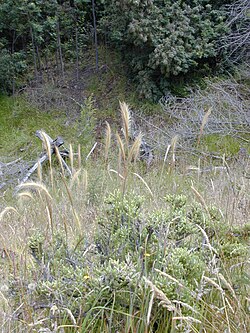| Plumegrasses | |
|---|---|
 | |
| Dichelachne crinita | |
| Scientific classification | |
| Kingdom: | Plantae |
| Clade: | Tracheophytes |
| Clade: | Angiosperms |
| Clade: | Monocots |
| Clade: | Commelinids |
| Order: | Poales |
| Family: | Poaceae |
| Subfamily: | Pooideae |
| Supertribe: | Poodae |
| Tribe: | Poeae |
| Subtribe: | Echinopogoninae |
| Genus: | Dichelachne Endl. [1] |
| Type species | |
| Dichelachne montana (syn of D. micrantha) | |
Dichelachne is a genus of Australian, Indonesian, and Pacific Island plants in the grass family. They are known commonly as plumegrasses. [2] [3] [4]